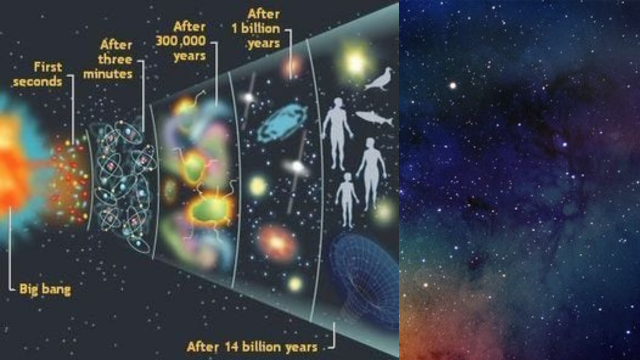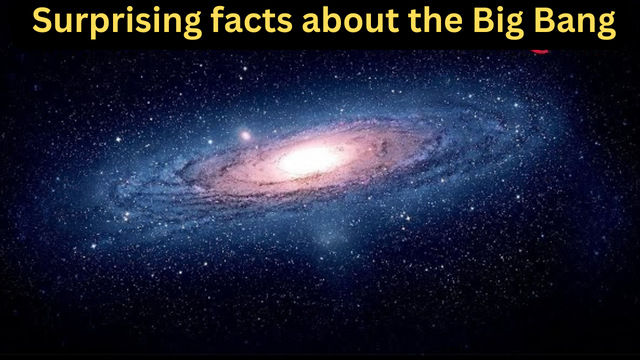In the early 20th century, astronomers Edwin Hubble and Milton Humason discovered that galaxies were moving away from the Milky Way. More to the point: Every galaxy is moving away from every other galaxy on average, which means the universe as a whole is expanding. So, in the past, the entire universe must have been very small, hot, and dense. That explanation, known as the Big Bang model, has stood up against discoveries and competing theories for the better part of a century. So what is this “Big Bang” thing? What caused it ? It’s the beginning ? Will it be the end ?
The Big Bang happened everywhere at once
The universe has no center or edge, and every part of the universe is expanding. This means that if we turn the clock backward, we can find out exactly when everything was packed together – 13.8 billion years ago. Because every place we can map in the universe today was in the same place 13.8 billion years ago, there was no place for the Big Bang: Instead, it happened everywhere at once.
The Big Bang cannot describe the true beginning of everything
“Big Bang” broadly refers to the theory of cosmic expansion and the hot early universe. However, sometimes scientists will also use the term to describe a moment in time – when everything was packed into a single point. The problem is that we have no observations or theories that describe that moment, appropriately (if clumsily) called the “initial singularity.”
The initial singularity is the starting point of the universe we see, but there may have been something that came before. The difficulty is that the very hot early universe and the rapid expansion called “inflation” that occurred soon after probably erased most – if not all – of the information about any history before the Big Bang. Physicists keep thinking of new ways to probe for signs of an earlier universe, and although we haven’t seen any of them yet, we can’t rule it out just yet.

The Big Bang theory explains from where all the hydrogen and helium in the universe came ?
In the 1940s, Ralph Alpher and George Gamow calculated that the early universe was hot and dense enough to create almost all the helium, lithium, and deuterium (hydrogen with a neutron attached) that exists in the universe today; Later research revealed where the primordial hydrogen came from. This is known as “Big Bang nucleosynthesis” and is one of the most successful predictions of the theory. Heavy elements (such as oxygen, iron, and uranium) are formed in star and supernova explosions.
One of the first people to think scientifically about the origin of the universe was by a Catholic priest
In addition to his theological training and work, Georges Lemaître was a physicist who studied the general theory of relativity and worked on some conditions of the early universe in the 1920s and 30s. His favorite metaphors for the origin of the universe were the “cosmic egg” and the “primordial atom”, but they never made sense, which is too bad, because, until the 1960s, the idea of a beginningless universe was controversial among physicists. The name “Big Bang” was coined by astronomer Fred Hoyle, a leading proponent of an alternative theory where the universe continues forever without a beginning.
The Big Bang is a cornerstone of cosmology, but it is not the whole story. Scientists continue to refine theories of the universe, driven by our observations of all the strange things out there. Dark matter (which holds galaxies together) and dark energy (which accelerates the expansion of the universe) are the biggest mysteries not explained by the Big Bang theory.
As we discover more and more new things, our view of the universe, like the universe itself, continues to evolve. But rather than vanishing, our best explanation for why things are the way they still remain fire at the beginning of the universe.
